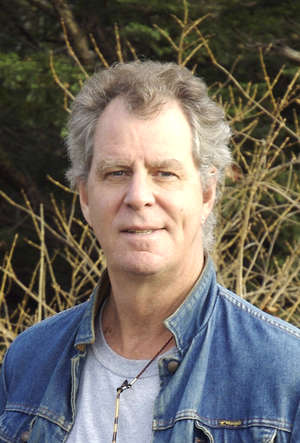What does architecture have in common with writing a novel? If you ask Peter M. Wheelwright, the answer is a lot. The principal of PMW Architects in New York City, Wheelwright recently released his debut novel, As It Is on Earth, which was published in September by Fomite Press. Wheelwright is also a professor at New York’s Parsons the New School for Design, where he teaches design studios mixed with heavy doses of theory, history, and philosophy—subjects that play a major role in his novel, about a young professor delving into his family’s past.
 |
| Photo © Eliza Hicks Peter M. Wheelwright |
How did your work as an architect affect your writing?
I’m often asked if As It Is on Earth is about architecture or an architect. It is not, but my training as an architect could not have better prepared me to write this book. The spatial and formal requirements were all there: How does one enter the story? How does one move through it? What is its structure? Working these things out, alone, at my new “drafting” board felt very familiar. Also, I think architects are natural storytellers. They tell stories about their buildings, about the world in which they are designing. They have to tell stories to persuade or inspire others to help them get things built.
Your descriptions of people and places are memorable. Has your work as an architect sharpened your powers of observation?
Architects are also visual; we almost compulsively notice our environment and aspire to a kind of spatial harmony of scale and detail in our work. This is true of the ways we regard both the built and natural environments, I think. That’s why the landscapes, rivers, islands are as significant in As It Is on Earth as the people and the places that inhabit them.
The way you deal with time also seems architectural. We go to a building and walk around it, but we rarely take a straight path. Did that arise from your sensitivity to architecture?
In the book, time follows the kind of meander we make through architectural space in order to understand it fully. The narrator has lost his sense of self. He feels he is only the sum of other events, times, and places that were or are beyond his control. He feels he is only a product of history, and his quest is to meander back and forth through time in order to finally find himself.
To what extent do the characters and settings grow out of your personal history? You have taught for many years, and your narrator is a professor. How else has teaching influenced your book?
One writes what one knows. While As It Is on Earth is not in any sense autobiographical, my family goes back 13 generations in Maine. I know the setting well. Also, the decision to have the narrator be a young college professor helped to explain his obsession with history and the connectedness of things. In fact, you’d come across a number of the book’s themes if you sat in my history and theory seminars at Parsons.
Why did you decide to write fiction?
The late American philosopher Richard Rorty made a wonderful literary distinction between instruction and inspiration. It helped me to see that the academic texts I’d written in the past were being received by students as a form of instruction about the way the world is, whereas fictional texts have the capacity to inspire us about the way the world is and how it could be made better.



Post a comment to this article
Report Abusive Comment